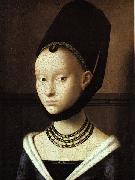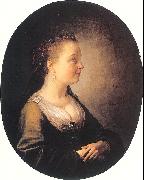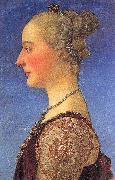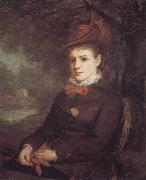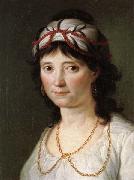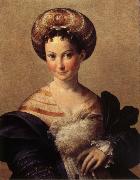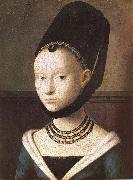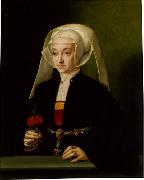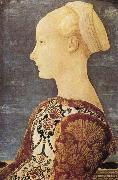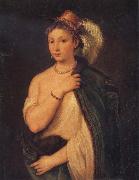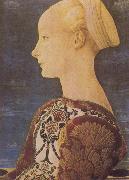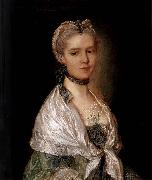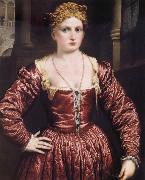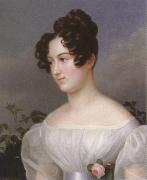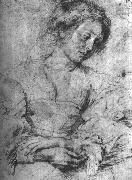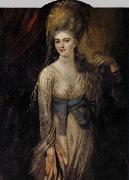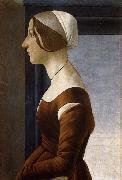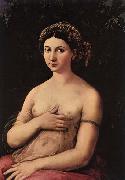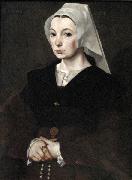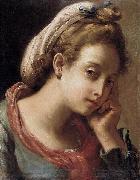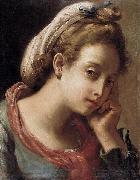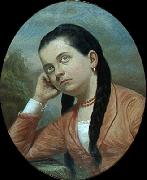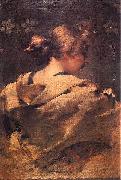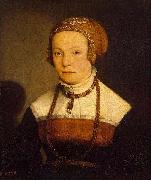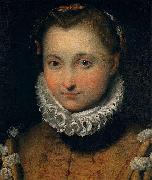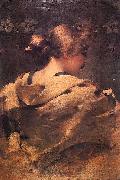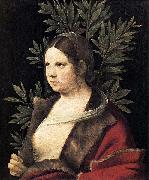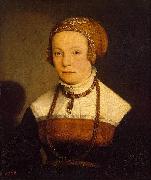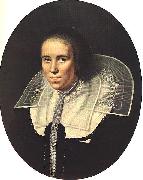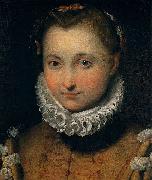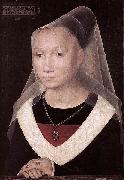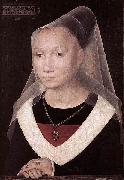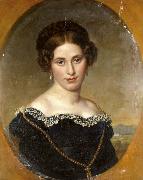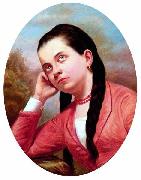Le Pétrole en gros ne Peignant pas de Minimum |
|
|||||||||||||||||||
|
|
|||||||||||||||||||
|
Gemaldegalerie, Berlin Gemaldegalerie, Berlin |
|||||||||||||||||||
|
|
|||||||||||||||||||
|
|
|||||||||||||||||||
|
|
1666-67 Pétrole sur le canevas, 44.5 x 40 cm Musée Métropolitain d-Art, New York 1666-67 Oil on canvas, 44,5 x 40 cm Metropolitan Museum of Art, New York |
||||||||||||||||||
|
|
|||||||||||||||||||
|
|
|||||||||||||||||||
|
|
1635-40 Pétrole sur lambrise les Galeries d-art de Ville de Manchester. 1635-40 Oil on panel Manchester City Art Galleries. |
||||||||||||||||||
|
|
|||||||||||||||||||
|
|
|||||||||||||||||||
|
|
1475 Détrempe sur lambrise Galleria degli Uffizi, Florence. 1475 Tempera on panel Galleria degli Uffizi, Florence. |
||||||||||||||||||
|
|
|||||||||||||||||||
|
|
|||||||||||||||||||
|
|
John William Waterhouse
le Portrait d~une Jeune Femme Portrait of a Young Woman ID de tableau:: 27649 |
mk58 c.1875-8, pétrole sur le canevas 61x50.8cm mk58 c.1875-8, oil on canvas 61x50.8cm |
|||||||||||||||||
|
|
|||||||||||||||||||
|
|
|||||||||||||||||||
|
|
Zacarias Gonzalez Velazquez
le Portrait d~uneJeune Femme Portrait of a Young Woman ID de tableau:: 28749 |
mk61 c. 1800 Pétrole sur le canevas 45x35cm mk61 c.1800 Oil on canvas 45x35cm |
|||||||||||||||||
|
|
|||||||||||||||||||
|
|
|||||||||||||||||||
|
|
mk68 Pétrole sur le bois 26 1/2x21 Parma, le C de Musée de Nationa. 1530 Italie mk68 Oil on wood 26 1/2x21" Parma,Nationa Museum C.1530 Italy |
||||||||||||||||||
|
|
|||||||||||||||||||
|
|
|||||||||||||||||||
|
|
nn07 après 1446 Panneau peignant ; Gemaldegalerie, Staatliche Preussischer Kulturbesitz Médité à Berlin d~ouest nn07 after 1446 Panel painting; Gemaldegalerie, Staatliche Museen Preussischer Kulturbesitz at West Berlin |
||||||||||||||||||
|
|
|||||||||||||||||||
|
|
|||||||||||||||||||
|
|
Huiler sur le canevas Oil on canvas |
||||||||||||||||||
|
|
|||||||||||||||||||
|
|
|||||||||||||||||||
|
|
mk86 c. 1465 Détrempe sur le bois 52.5x36.5cm mk86 c.1465 Tempera on wood 52.5x36.5cm |
||||||||||||||||||
|
|
|||||||||||||||||||
|
|
|||||||||||||||||||
|
|
mk91 1530 Huilent sur le canevas 96x85 mk91 1530s Oil on canvas 96x85 |
||||||||||||||||||
|
|
|||||||||||||||||||
|
|
|||||||||||||||||||
|
|
mk150 1506 Canevas sur lambrise 41x33.6cm mk150 1506 Canvas on panel 41x33.6cm |
||||||||||||||||||
|
|
|||||||||||||||||||
|
|
|||||||||||||||||||
|
|
mk156 c. 1465 Pétrole sur lambrise 51x35cm mk156 c.1465 Oil on panel 51x35cm |
||||||||||||||||||
|
|
|||||||||||||||||||
|
|
|||||||||||||||||||
|
|
mk158 c. 1759 mk158 c.1759 |
||||||||||||||||||
|
|
|||||||||||||||||||
|
|
|||||||||||||||||||
|
| mk170 Oil on canvas 106.7x85.7cm | ||||||||||||||||||
|
|
|||||||||||||||||||
|
|
|||||||||||||||||||
|
| mk247 1827,oil on canvas,24.625x20.625 in,62.5x52.5 cm,private collection | ||||||||||||||||||
|
|
|||||||||||||||||||
|
|
|||||||||||||||||||
|
| Portrait of a Young Woman | ||||||||||||||||||
|
|
|||||||||||||||||||
|
|
|||||||||||||||||||
|
| 1628-35 Black chalk Museum Boijmans Van Beuningen, Rotterdam Author: RUBENS, Pieter Pauwel Title: Portrait of a Young Woman , 1601-1650 , Flemish Form: graphics , portrait | ||||||||||||||||||
|
|
|||||||||||||||||||
|
|
|||||||||||||||||||
|
| 101 x 127 cm Institue of Arts, Detroit This portrait is painted on the reverse of the Nightmare. The portrait is generally believed to be of the woman Fuseli loved, Anna Landolt, who was a niece of the Zerich physiologist Johann Caspar Lavater (1741-1801). Lavater and Fuseli were close friends, but Fuseli's suit was rejected by Anna's parents, and it may not be coincidence that the portrait is on the reverse of his painting The Nightmare. Artist: FUSELI, John Henry Title: Portrait of a Young Woman , painting Date: 1751-1800 Swiss : portrait | ||||||||||||||||||
|
|
|||||||||||||||||||
|
|
|||||||||||||||||||
|
| 1475 Tempera on panel, 61 x 40 cm Galleria Palatina (Palazzo Pitti), Florence There are several assumptions concerning the identity of the young woman (Simonetta Vespucci, Clarice Orsini, Fioretta Gorini etc.). The picture was partly repainted. The sleeve of the robe covers the left hand in a very unnatural way. The lock of hair coming loose from her bun gives a more spontaneous feeling to this severe profile portrait. The half length figure is slightly to the left of the centre of the picture. Behind her is a dark window frame and it contrasts with the gentle flow other contours. The attribution of the work to Botticelli is disputed. Artist: BOTTICELLI, Sandro Painting Title: Portrait of a Young Woman , 1451-1500 Painting Style: Italian , , portrait | ||||||||||||||||||
|
|
|||||||||||||||||||
|
|
|||||||||||||||||||
|
| 1518-19 Oil on wood, 85 x 60 cm Galleria Nazionale d'Arte Antica, Rome Much of Raphael's energy during his last years was directed toward public activity, or at least toward commissioners who were influential in city life and life within the Papal States (he designed a villa, known as the Villa Madama, for Cardinal Giulio de' Medici). Furthermore, many critics attribute to him a series of compositions of the Holy Family and of Saints which were then executed by his followers. The famous portrait of a young woman, called La Fornarina, must also be viewed in this perspective, although it is signed, in Latin, "Raphael from Urbino". The signature is engraved on the thin ribbon that the girl wears just under her left shoulder. Tradition identifies her with Margherita Luti, a Sienese woman whom Raphael loved, the daughter of a baker from the Roman district of Santa Dorotea. The stiffness of her features and the heavy chiaroscuro effect make La Fornarina an almost certain workshop piece with the contribution of Raphael, for Raphael's own work from this period is far more delicate. There are several old copies of this painting, the most famous in the Galleria Borghese.Artist:RAFFAELLO Sanzio Title: Portrait of a Young Woman (La Fornarina) Painted in 1501-1550 , Italian - - painting : portrait | ||||||||||||||||||
|
|
|||||||||||||||||||
|
|
|||||||||||||||||||
|
| 1440 Silverpoint on prepared paper, 166 x 116 mm British Museum, London The finest of the drawings ascribed to Rogier is the Portrait of a Young Woman. In its freshness of observation and lively expression the drawing comes closest to the painted portrait of another young woman (Staatliche Museen, Berlin), although in contrast to that painting - probably the earliest of the independent portraits by Rogier still extant - the draftsman has modeled the face with much greater plasticity, using light and shade to make shapes like the eyelids appear more rounded and fleshier. This factor in turn links the drawing closely to a portrait of a woman ascribed to the Master of Fl?malle, now in the National Gallery, London, and to the faces in Rogier's earlier Deposition (Prado, Madrid). The strong, bright reflections on the shaded areas of the sitter's throat and cheeks also adopt a method frequently used by Jan van Eyck to heighten the sense of three-dimensionality. By comparison with the chiaroscuro and the powerful three-dimensional style of the drawing, the painted face of the young woman in the portrait appear generally more linear - paradoxically, one might almost say more like a drawing. The draftsman's intention of placing several strong contrasts of light and shade side by side also matches the effects in the Deposition. Like the shaded side of the head of the Virgin, the right-hand side of the portrait drawing shows the alternation of light and very dark areas, and the artist has even shaded the headdress heavily next to the area of reflected light on the sitter's jaw line just below her ear, though this effect is illogical, since if the head-dress is to reflect light it ought to be lit there itself. However, the darkness in the outer area of the drawing, emphasizing the fold at the back of the head-dress, is a genuinely distinctive feature, producing the effect of heavy shadow. There are no such heavy shadows in any painted portrait by Rogier; this pictorial device, creating a sense of space around the figure, first appears in painting around the middle of the century in works by the artist Petrus Christus, who was active in Bruges. Here the draftsman may have created the shadows before drawing the sitter herself, or he may have placed them there to make the back of the headdress retreat into the background - an effect that would also be achieved by the uniform dark ground of a painted portrait. The immediacy of this portrait gives the impression that it was drawn from life. Such an impression is further supported by the fact that only the head and the complicated head-dress are executed in detail, while the upper part of the sitter's body is only lightly indicated; her dress with its patterns of folds could be added later, and leaving it out while the woman herself was being portrayed would have spared her the tedium of sitting for the artist. Such details could easily enough be copied from a painting, but the visible part of the woman's body appears rather awkwardly executed. The right hand on the edge of the picture is particularly jarring, and does not quite connect up anatomically with her shoulder. It is complex in structure, but only half shown, and its clear outline does not make it look like a study from nature. Perhaps the artist completed the lower areas of the portrait later, using a work already in his stock, and experimenting with the composition of his planned painting. All Early Netherlandish portraits were certainly based on drawings from life, for the long process of painting would not have allowed the artist to work from a living model. The Portrait of a Young Woman, outstanding as both a drawing and a portrait, must be one of the very few examples of this genre to have been preserved. Since over and beyond these qualities, the drawing shows similarities with Rogier's painted portraits in its presentation, and with his Deposition in the manner of depicting a head, it could well be by his own hand. It was probably done quite close to the time of the great altarpiece for the Archers of Leuven, while the other (painted) Portrait of a Young Woman must have been executed rather later.Artist:WEYDEN, Rogier van der Title: Portrait of a Young Woman Painted in 1401-1450 , Flemish - - graphics : portrait | ||||||||||||||||||
|
|
|||||||||||||||||||
|
|
|||||||||||||||||||
|
| Date 1541(1541) Medium Oil on oak panel | ||||||||||||||||||
|
|
|||||||||||||||||||
|
|
|||||||||||||||||||
|
| 1777 Oil on canvas 51 X 40 cm (20.08 X 15.75 in) cjr | ||||||||||||||||||
|
|
|||||||||||||||||||
|
|
|||||||||||||||||||
|
| Date 1777 Medium Oil on canvas Dimensions 51 x 40 cm (20.1 x 15.7 in) cyf | ||||||||||||||||||
|
|
|||||||||||||||||||
|
|
|||||||||||||||||||
|
| Medium Oil on cardboard Dimensions 61 x 46 cm (24 x 18.1 in) cjr | ||||||||||||||||||
|
|
|||||||||||||||||||
|
|
|||||||||||||||||||
|
| oil on canvas Dimensions 98 x 64 cm (38.6 x 25.2 in) 1896 cjr | ||||||||||||||||||
|
|
|||||||||||||||||||
|
|
|||||||||||||||||||
|
| Date after 1548(1548) Medium Oil on wood Dimensions Height: 51 cm (20.1 in). Width: 43 cm (16.9 in). cjr | ||||||||||||||||||
|
|
|||||||||||||||||||
|
|
|||||||||||||||||||
|
| Date between 1570(1570) and 1575(1575) Medium Oil on paper Dimensions Height: 45 cm (17.7 in). Width: 33 cm (13 in). cjr | ||||||||||||||||||
|
|
|||||||||||||||||||
|
|
|||||||||||||||||||
|
| oil on canvas Dimensions 98 x 64 cm (38.6 x 25.2 in) cyf | ||||||||||||||||||
|
|
|||||||||||||||||||
|
|
|||||||||||||||||||
|
| Date 1506(1506) Medium Oil on canvas mounted on panel Dimensions Height: 41 cm (16.1 in). Width: 34 cm (13.4 in). cjr | ||||||||||||||||||
|
|
|||||||||||||||||||
|
|
|||||||||||||||||||
|
| after 1548(1548) Medium Oil on wood cyf | ||||||||||||||||||
|
|
|||||||||||||||||||
|
|
|||||||||||||||||||
|
| first half of 17th century Medium oil on wood cyf | ||||||||||||||||||
|
|
|||||||||||||||||||
|
|
|||||||||||||||||||
|
| between 1570(1570) and 1575(1575) Medium oil on paper cyf | ||||||||||||||||||
|
|
|||||||||||||||||||
|
|
|||||||||||||||||||
|
| 1480(1480) Medium oil on oak panel cyf | ||||||||||||||||||
|
|
|||||||||||||||||||
|
|
|||||||||||||||||||
|
| 1480(1480) Medium oil on oak panel Dimensions Height: 38 cm (15 in). Width: 26.5 cm (10.4 in). cyf | ||||||||||||||||||
|
|
|||||||||||||||||||
|
|
|||||||||||||||||||
|
| 1822(1822) Medium oil on canvas Dimensions 72 x 58 cm (28.3 x 22.8 in) cjr | ||||||||||||||||||
|
|
|||||||||||||||||||
|
|
|||||||||||||||||||
|
| oil on cardboard Dimensions 61 X 46 cm cyf | ||||||||||||||||||
|
|
|||||||||||||||||||
|
|
|||||||||||||||||||
|
| after 1548(1548) Medium oil on panel cyf | ||||||||||||||||||
|
|
|||||||||||||||||||
|
Christoph Amberger
(c. 1505 --1562) was a painter of Nernberg in the 16th century, a disciple of Hans Holbein, his principal work being the history of Joseph in twelve pictures. Amberger travelled to Northern Italy and Venice between 1525 and 1527. He died in Augsburg. Portrait of a Young Woman after 1548(1548) Medium oil on panel cyf |
|||||||||||||||||||
|
Related Paintings to Christoph Amberger :. |
|||||||||||||||||||
|
|
|||||||||||||||||||
|
|
|||||||||||||||||||
|
CONTACTER DES Etats-Unis |







